The onboarding stage is your opportunity to start delivering on what you promised during the sales process. In this guide, I will teach you everything you need to know about customer onboarding, including how to implement it as a normal part of your customer service, leveraging easy-to-use templates.
In this article:
- What is customer onboarding?
- What is a customer onboarding playbook?
- Creating a Customer Onboarding Strategy
- The Customer Onboarding Process Workflow
- Customer Onboarding Template
- Customer Onboarding Best Practices
- Customer Onboarding Checklist
- The Benefits of Customer Onboarding
- Customer Onboarding Examples
- Customer Onboarding Software
What is customer onboarding?
Customer onboarding is the nurturing process that gets new users comfortable with your product. An exceptional customer onboarding program involves step-by-step tutorials, helpful guidance, and celebrations when a customer achieves milestones using your product or service.
Customer onboarding begins after the sale is complete. It may involve a dedicated onboarding team or rely on the customer “self-onboarding” to your product with help and resources that you create for them.
Why is customer onboarding so important?
The onboarding stage sets the foundation for how your customer will feel about your product or service. If you can help your customer quickly adopt your product and start to see value, chances are they’re going to want to keep using it, which can positively influence their customer lifetime value (LTV).
Customer onboarding is a critical part of the customer experience, with over two-thirds of customers saying that they factor onboarding and post-sale support into their purchasing decisions.
Here are a few more facts that prove the importance of onboarding:
- Customer retention is critical to your business, and effective onboarding has been shown to increase customer retention by 50%.
- 86% of customers express greater loyalty to a business when provided with educational and welcoming onboarding.
- A great onboarding experience creates highly engaged customers, and data shows that highly engaged customers make purchases more frequently and spend more per transaction.
In other words, customer onboarding is imperative to customer retention and, in turn, your business growth.
The Role of the Onboarding Specialist
An onboarding specialist is responsible for ensuring that customers are set up for success with your company’s product or offering.
They work with the customer to understand their unique goals and objectives and then help the customer get started with your product to achieve those goals.
The onboarding specialist is typically the first post-sale relationship that the customer experiences with your company, and they try to “teach the customer how to fish.” In other words, they’re training the customer on how to use your product and showing them the value it offers early on, so that once the onboarding stage is finished, the customer is set up for ongoing success.
An onboarding specialist’s role is both technical and strategic, mapping your product’s capabilities to the customer’s individual OKR’s.
Creating a Customer Onboarding Strategy
Before you launch your onboarding program, I recommend you start by setting a goal and making a plan. Where you can, use data to decide what objectives you care about when it comes to customer onboarding.
Here are a few questions I recommend asking yourself to narrow down your onboarding goals:
- What does our churn data tell us about why (and when) people churn?
- What are the milestones we want customers to achieve in their first day, first week, first month, etc?
- What metrics do we know are important for adoption and retention? (MAU, etc.)
- How do customers see value in our product?
- What are our “sticky” features that we know lead to retention and upsell?
This type of data should tell you what’s important for customers — including where they get stuck or feel frustrated.
Based on your data, you may decide that one of your goals is to get new customers to use your product more than once in the first week. Or, you may find it really important to have a customer build and launch something on their own before the end of the first month.
No matter your goal, once you’ve defined it, you can start planning an excellent customer onboarding experience.
The Customer Onboarding Process Workflow
The point of onboarding is to help new users get acquainted with all the features of your product. The flow of your onboarding process will depend on each user’s specific needs.
You can’t force a new user to watch your welcome video, for example, but they should be able to access it when they’re ready.
Your objective is to empower your customers by providing them with all the resources to onboard autonomously. That means your process requires certain features to guide customers from setup to realizing their first win.
Here are the steps I like to include in an onboarding process.
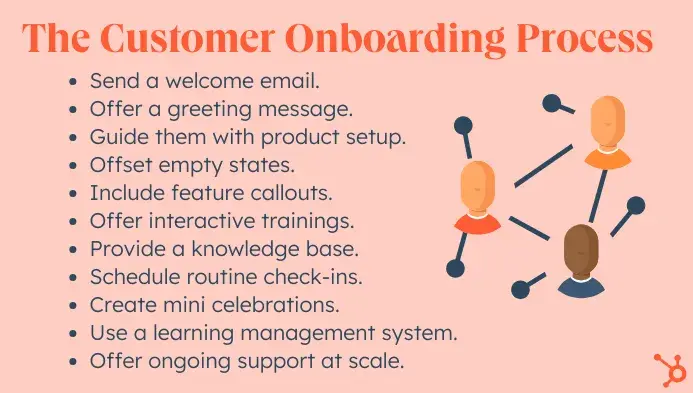
1. Send a welcome email.
Your first correspondence (also known as a welcome email) with your new customer needs to be a positive one. Congratulate them on their new purchase and thank them for choosing you over other options.
If this email is automated, make it feel more personal by making the “reply” address an actual human on your team, and use personalization tokens to include their first name. (Side note: email marketing tools can help you automate and set all of this up.)
Also include any important resources, like a getting started guide, in your email, but be sure not to overwhelm your new customer.
If you’re doing a high-touch onboarding motion, don’t be afraid to express your excitement about working with the customer and then offer to set up a kickoff call or initial meeting.
Your welcome email should also have a clear CTA. Whether it’s having them log in and complete a task (like setting up their profile), scheduling their kickoff call with your team, or signing up for a new user training, make it clear and easy to complete.
I really liked this email I received from Wiza explaining other ways I could use their platform. I find that a good welcome email prevents feeling overwhelmed once I know a clear first step I can take.
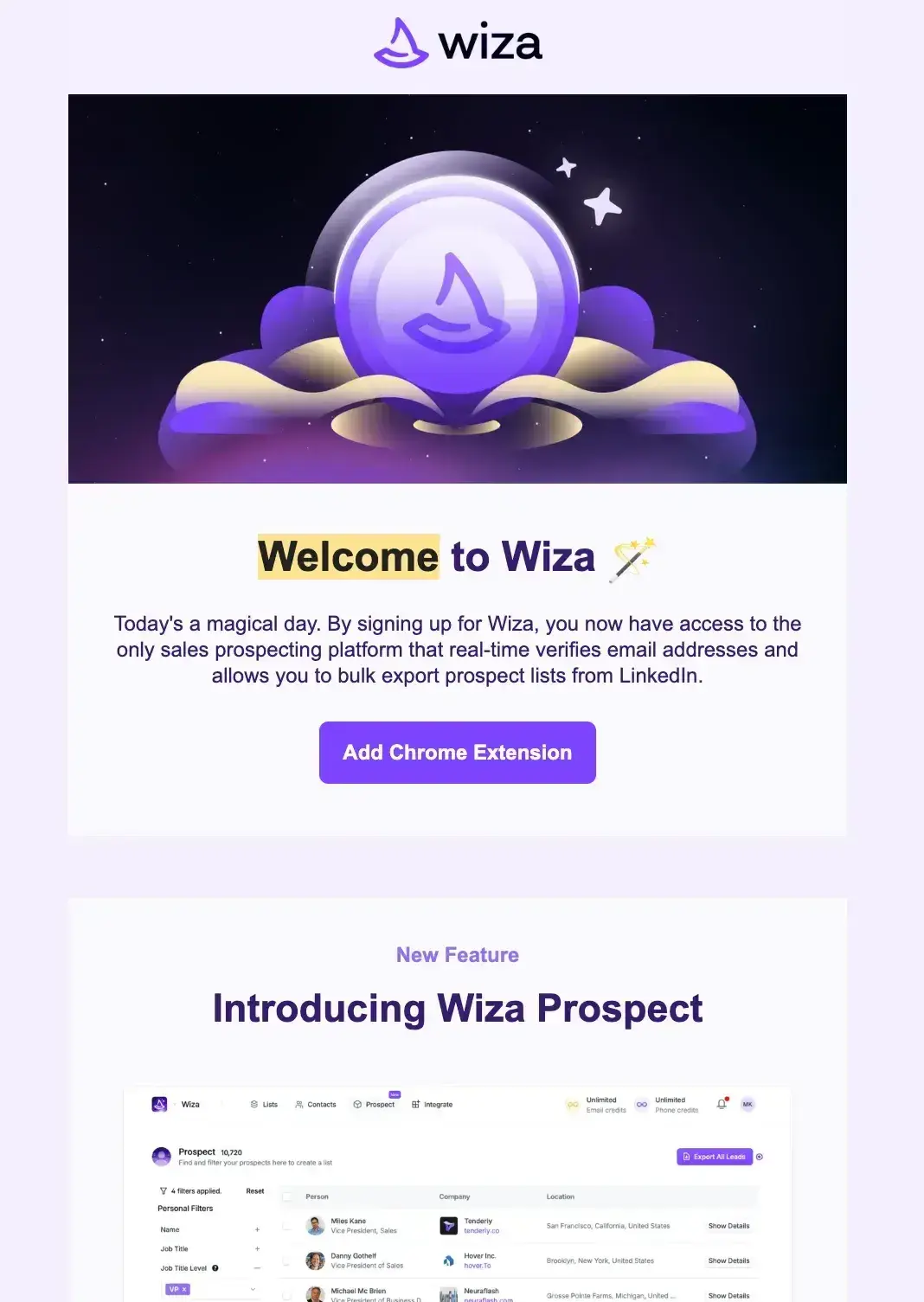
Pro tip: Use these 50 Customer Service Email Templates to welcome, onboard, and communicate with your customers.
2. Offer a greeting message.
Different from a welcome email, a greeting message is an in-app welcome that greets users on their first login and encourages them to take the first step in setting up their account.
It’s best practice to ask the user to do only one thing (i.e., change their password or turn on email notifications) and should include a video to guide them.
If you can, I suggest creating a completion tracker for things like profile setup, so users can easily see if they've completed all the required items for account setup.
This email from Hive is a great example of an in-app greeting message with a simple and clear CTA.

3. Guide them with product setup.
A guided tutorial or setup wizard is great for customers who are ready to jump in and get started on their own. Create a guided tutorial that takes your customers through the setup process, step by step.
Guided setup is most commonly used when there are multiple steps or when steps need to be taken in a particular order.
This tutorial should be short and sweet, as well as optional. Make sure that if your customer doesn’t complete the tutorial the first time, there’s an easy way for them to reference the information later (like in an FAQ or Getting Started section).
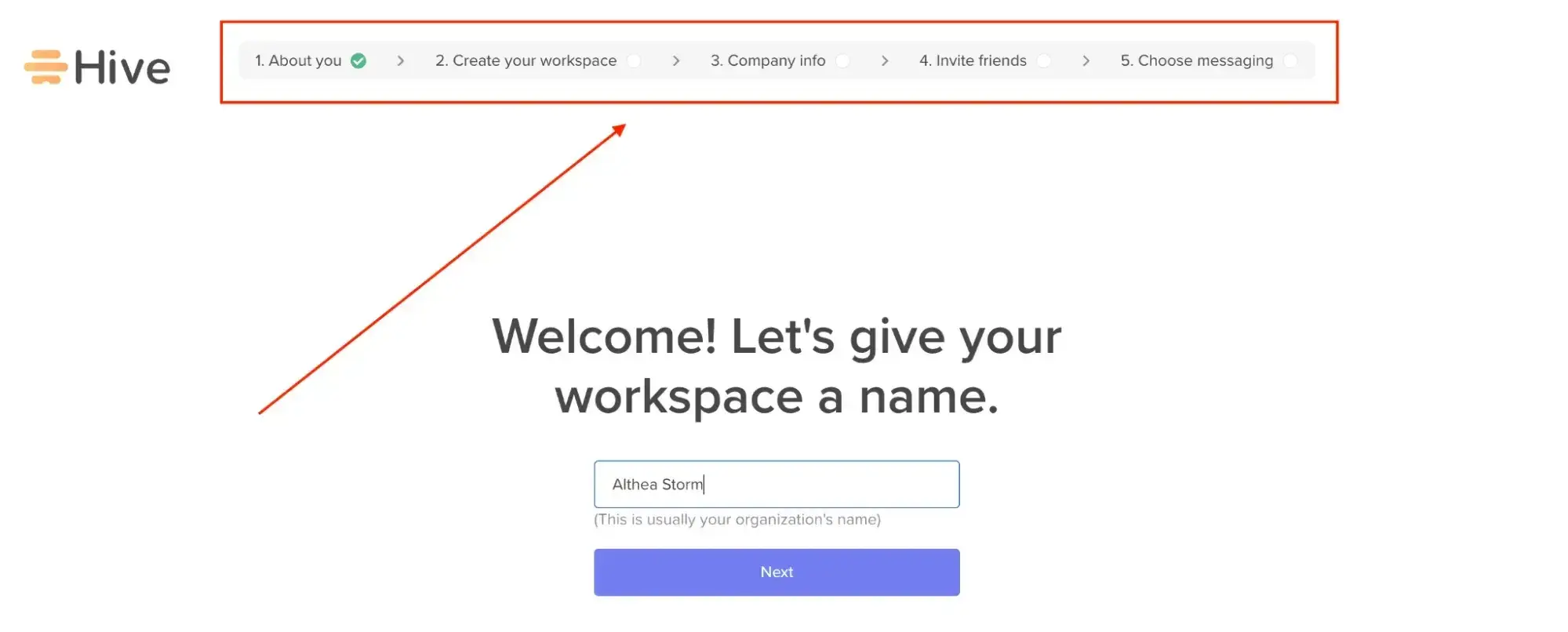
4. Offset empty states.
When a customer first enters their portal, there will be features without any data. Fill these empty states with educational and actionable content to explain what the feature is, demonstrate its value, and encourage them to start using it.
By doing this, you’re helping your customer visualize what their success could look like.
An example might be an in-app scheduler with the copy “Schedule meetings with your team in seconds.” Or an autoresponder feature that reads, “Build email sequences to send to your audience with the click of a button.”
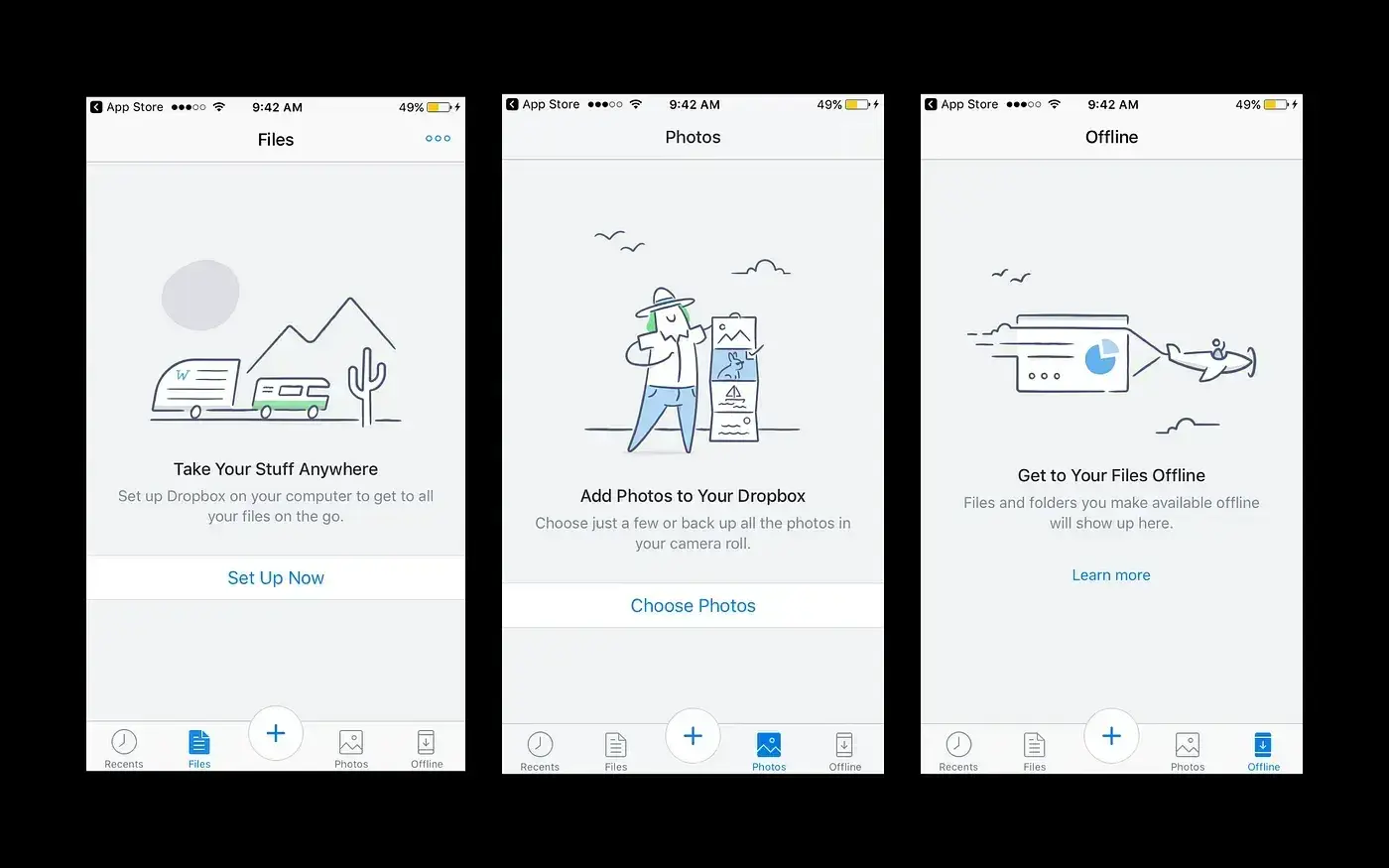
5. Include feature callouts.
Use a tip banner that guides users around the product and calls out any important features that they should know about.
The banners serve as an introduction, not a substitute for an actual tutorial. Once a user completes a certain behavior (like logging in a certain number of times, or completing X% of their onboarding), use feature callouts to show them more mid-level to advanced features they can take advantage of.

6. Offer interactive trainings.
The most important part of the onboarding experience is teaching your customers how to use the product and get value from it. And the best way for customers to learn is to let them use the product themselves and learn by doing.
An interactive tutorial will be similar to your feature callouts, except they will appear as the user completes one task to show them how to accomplish the next one.
Make sure to create contextual tips that teach a user how to complete a task.
If you can’t do this in an automated way, find other ways to help your customer complete in-app tasks and “missions” on their own so they can get familiar with your product’s workflows.
7. Provide a knowledge base.
A knowledge base or resource section is key for new users. By offering resources like frequently asked questions, you help your users solve their problems quickly and autonomously.
I suggest creating a section specifically for new users and admins. This section could offer content in a variety of ways, like help articles, Academy courses, and bite-sized training videos that are all key to onboarding with your product.
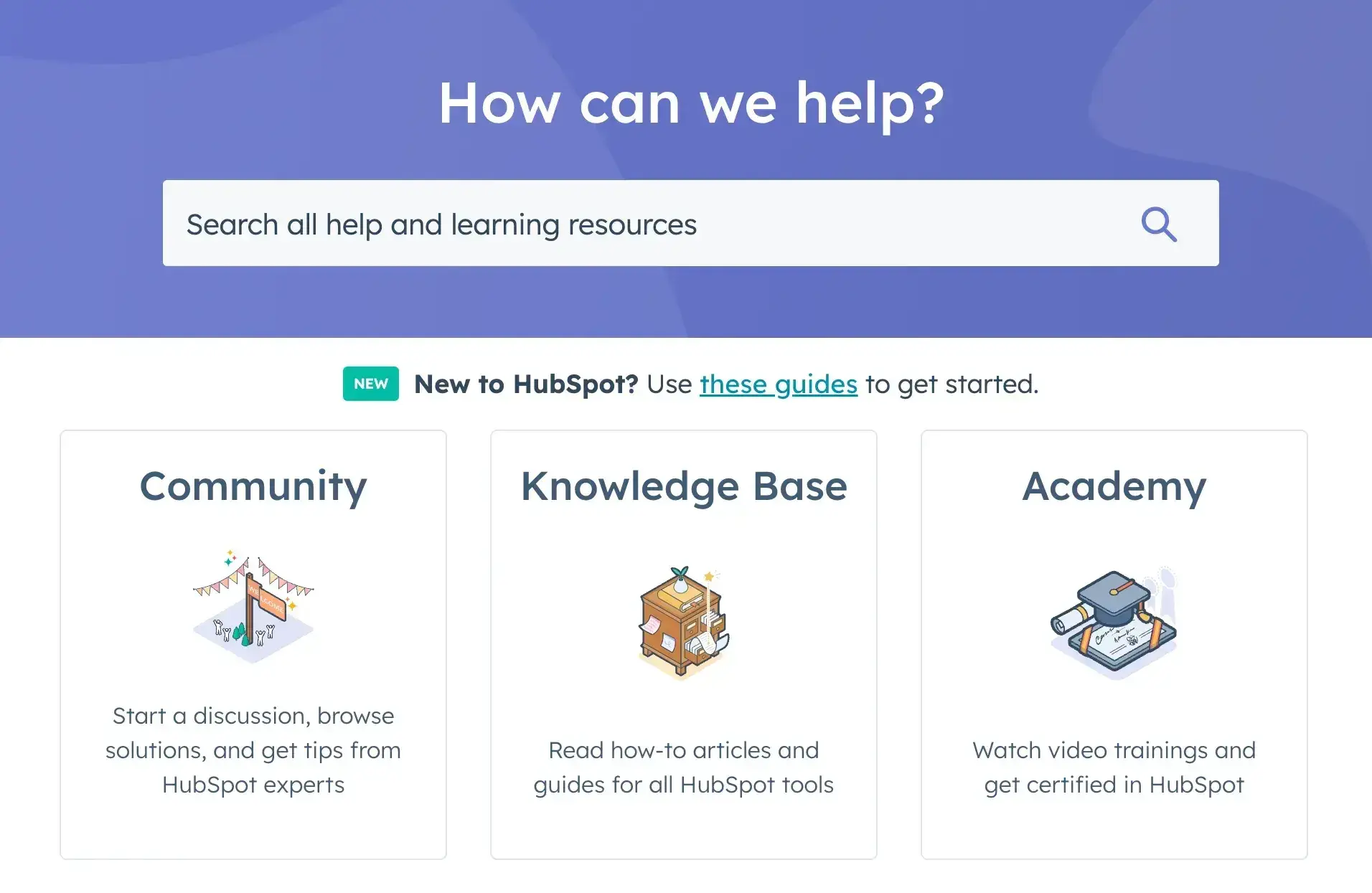
You should also have a chatbot that’s connected to your knowledge base to help surface help articles and content for customers.
I suggest leveraging your chatbot to create a personalized support path for customers during onboarding. You can do this by building an onboarding flow into your support chatbot and ensuring the chat widget is always visible when a customer is logged in. This onboarding flow should include decision trees for the most frequently asked questions from new users so that your customers can self-serve 24/7.
If you’re using an AI Chatbot, that’s even better! When your chatbot is connected to your help center and customer academy, new users can quickly and easily search for what they need by asking their own questions, leading to quicker resolution times (and happier customers!)
While I had Chat GPT generate this image for me, here’s an example of what this sort of chatbot greeting could look like:
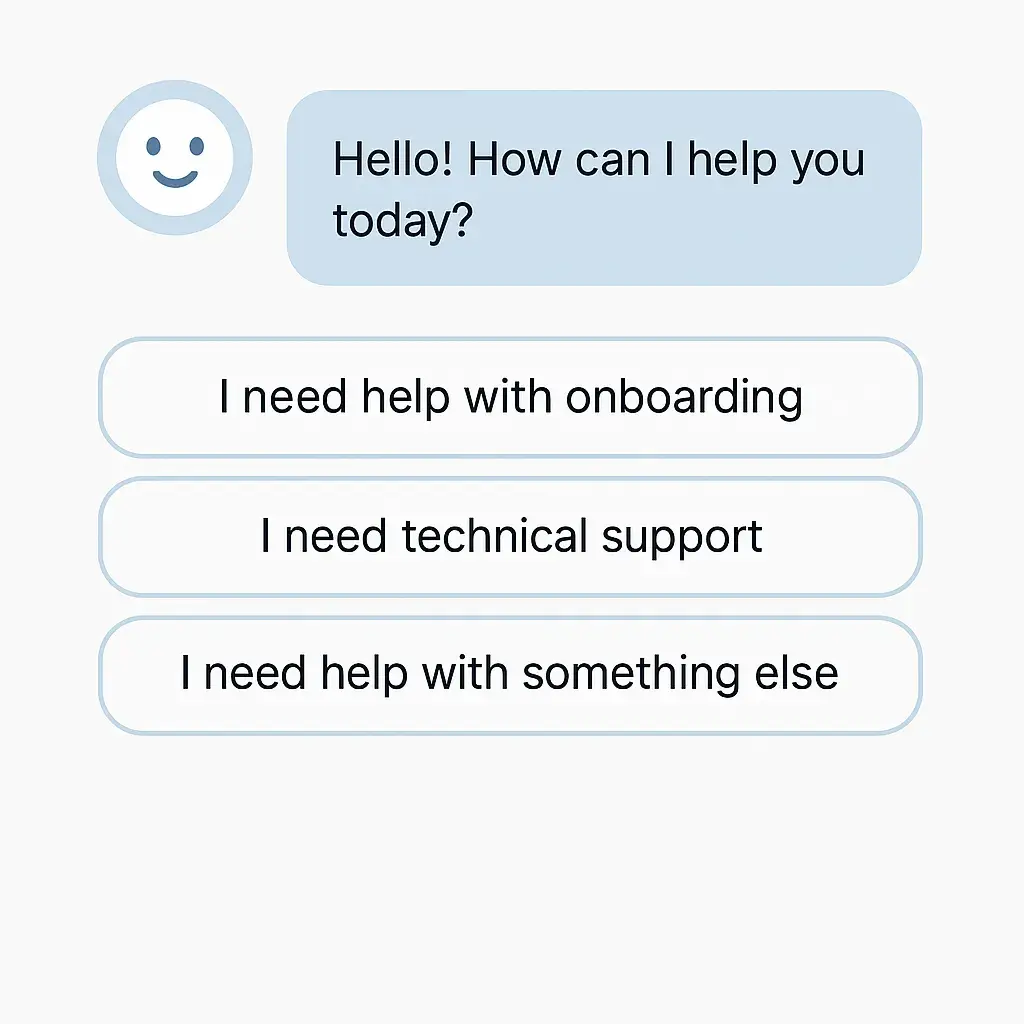
If you’re interested in exploring this and are currently using HubSpot, try our customer support AI agent. It’s your AI-powered front line for repetitive questions, so your team can handle the important conversations that keep customers loyal.
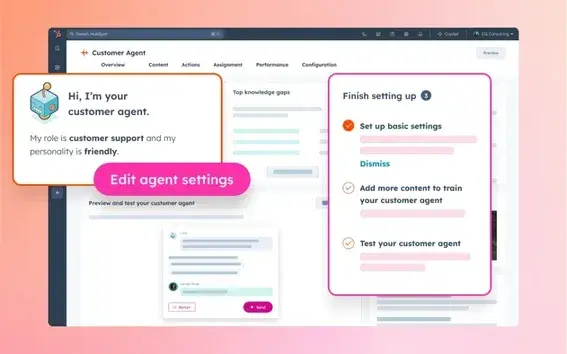
8. Schedule routine check-ins.
I always say that “no news isn’t always good news” when it comes to working with customers. You never want to assume that your customers have everything they need just because you haven’t heard from them.
Routine check-ins should be a key feature of your onboarding process.
If you have a team dedicated to customer onboarding, make sure there’s an onboarding project plan that gets routinely reviewed with your customer. This ensures there’s transparency between you and the customer regarding onboarding progress and deliverables.
If you don’t have a dedicated team to support your customers during onboarding, consider automated ways of checking in with customers, like in-app surveys or automated emails based on certain milestones.
Pro tip: Create an automated way of checking in and “nudging” customers who fall behind in onboarding. You can trigger an email campaign or in-app message based on certain behaviors, like failure to complete something within 45 days.
Your new customers deserve a little extra TLC, and they should feel like you care about their progress. Take the time to check in with them to see where they may be getting stuck, and offer to help them with any roadblocks.
9. Create mini celebrations.
Everyone loves to celebrate. Based on the goals you identified in your onboarding strategy, decide which customer milestones are worth creating a “mini celebration” for during onboarding.
By celebrating these mini milestones, you get your new customers excited about being one step closer to their goals.
You can do this with an in-app notification, a congratulatory email, or a quick call. The more they feel that you’re invested in their success, the more invested they will be in your solution.
Pro tip: If you don’t already have some quick wins identified, be sure to find a few easy ways your customer can complete something to feel “accomplished” during onboarding. This not only helps them feel like they’re getting the hang of using the product, but it can also help them see value from the tool early on.
See the email below from Deel as a great example. Receiving an email like this gave me the excitement of a little win, while also encouraging me to explore their other products.
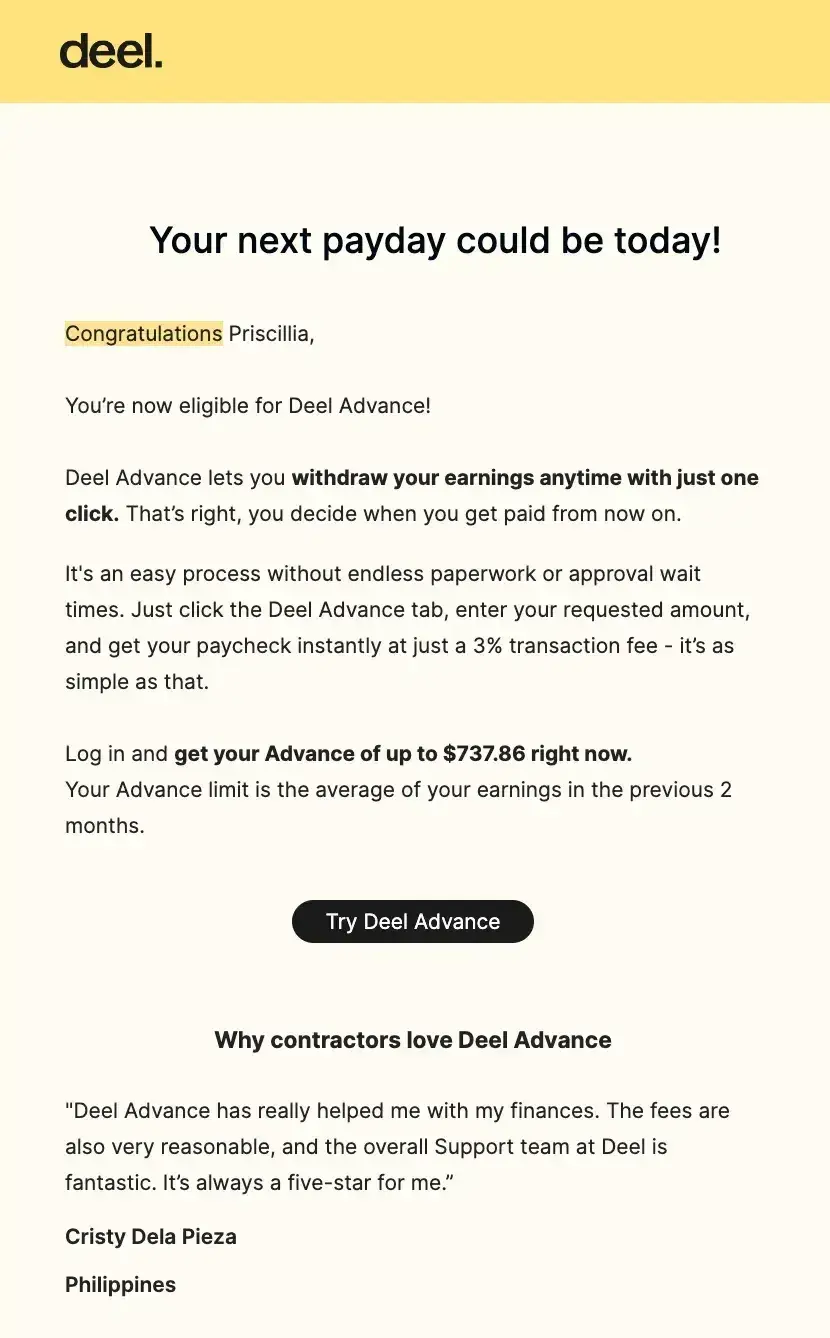
10. Use a learning management system.
Learning management systems (LMS) are software tools used to train, onboard, and guide your customers (or even employees) through different lessons, tools, and work processes.
Here are some of my ideas on how to leverage this:
- Create onboarding tracks within an LMS that lets customers complete online courses at their own pace.
- Tailor the digital onboarding journey for your customer by personalizing the learning paths and content based on the user’s role or their goal.
- Consider ways to make this process more fun by offering incentives like micro-certifications or digital badges for customers who complete the entire learning track during onboarding.
Pro tip: When building your onboarding learning tracks, try to find interactive ways to help your customers get a quick win. For example, your training videos could begin by saying that viewers should pull up their account and follow along with the video for best results. This way, they’re doing the task as they’re learning it, and they also accomplish something in-app at the same time!
11. Offer ongoing support at scale.
If you don’t have a dedicated onboarding specialist (or even if you do), consider hosting webinars or office hours to help new customers learn about your product and get their questions answered.
In my experience, events like webinars and office hours can help lower support ticket volume and also drive customer satisfaction. I’ve found that when customers can get their questions answered in real time, they’re usually very happy!
Create a webinar cadence that makes sense for your team, and focus on topics that you know are critical to a successful onboarding experience. Make sure you have an onboarding or product specialist on hand for these webinars to adequately field those live customer questions.
Pro tip: Make sure to consider all stages of the onboarding journey when you plan out your scaled support offerings. Try tailoring the scaled support event by role, milestone, or goal.
For example, with new users, you could host casual monthly office hours that include time for Q&A. For customers who are in the later stages of onboarding, you could host webinars that highlight additional use cases that they can try next to get even more value out of your product.
Customer Onboarding Template
Creating a customer onboarding process from scratch is a time-consuming task. It can also be hard to know where to begin. Luckily, you can use a template to get on the right track.
The HubSpot customer onboarding template includes:
- An internal onboarding checklist. Make sure everything’s ready to go internally by automating onboarding tasks and checking off individual tasks that must be completed for each customer.
- A welcome packet template. This welcome packet template includes everything you need to set up your customer for success, including a team introduction, a customer intake form, a timeline for the first few months, and a resource sheet with links to help documentation. This is especially important if you plan to execute an email onboarding sequence.
- A first onboarding call agenda. The first onboarding call is a make-or-break moment, setting the tone for your relationship with your customer. You’ll share this agenda with your customers to make sure everyone is on the same page.
- A training resources template. You don’t want your customer to leave the call and not know what to do next. By providing training resources, you’ll ensure they have everything they need to get the most out of the product.
- Handoff templates. Use these templates to hand off your customer to their long-term contact at your company.
Download your free customer onboarding templates
When using these templates or creating a customer onboarding process from scratch, it’s important to follow best practices. Let’s take a look below.
Customer Onboarding Best Practices
Let’s look at a few Customer Onboarding best practices that will help you create a solid onboarding experience.
The following tips require information from every point of contact with your customers. Keep track of your interactions in a CRM or data management platform.
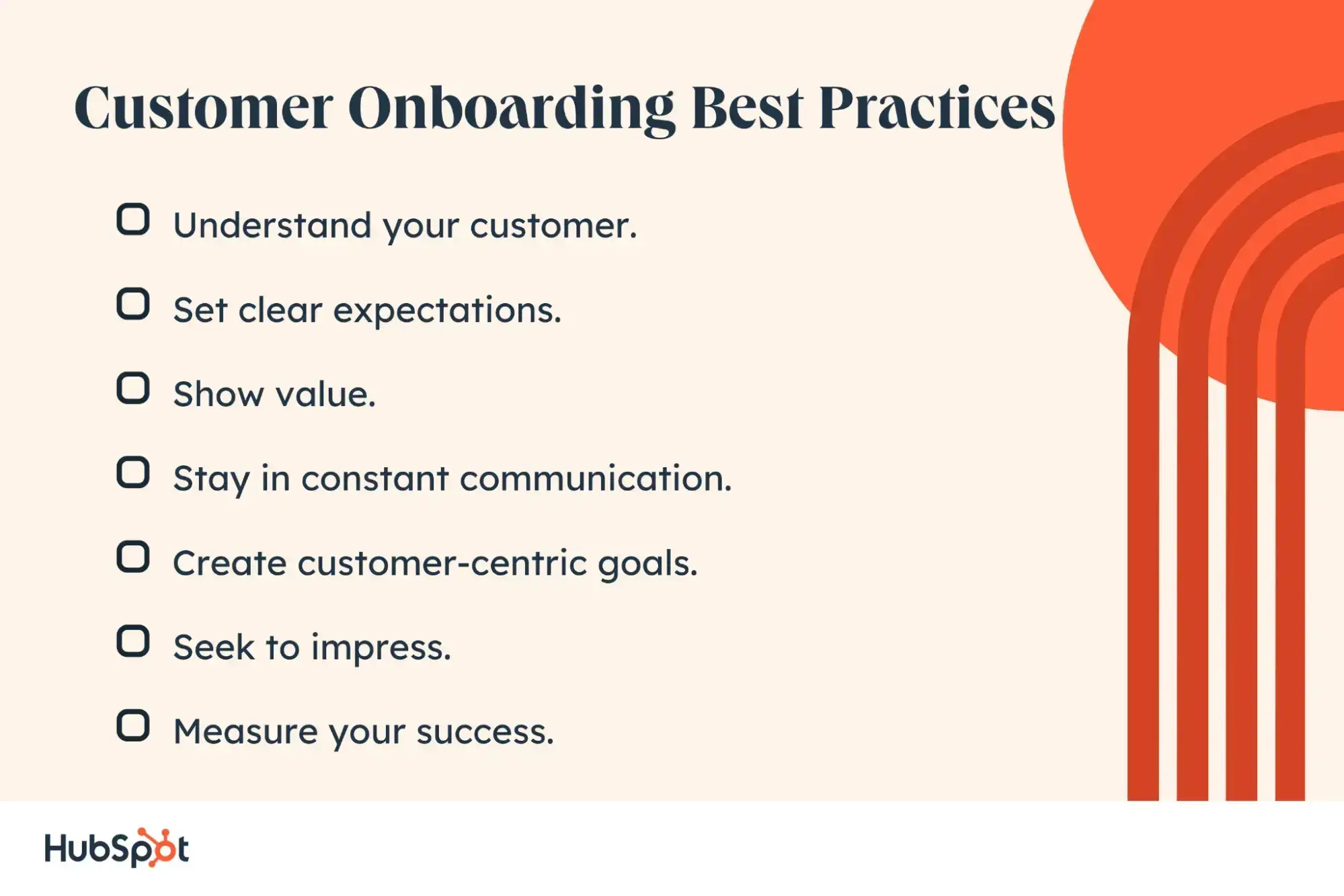
1. Understand your customer.
The best way to understand your customer is to ask the right questions and then listen to what they have to say.
You likely know your buyer persona in and out, which translates to knowing your customer pretty well — including their overall value drivers.
But each customer is going to have their own unique goals, challenges, and success metrics. It’s critical that you take the time to understand what your customer cares about and what they’re trying to achieve.
When you have this level of detail, you can tailor their onboarding experience and get them to see value more quickly.
2. Set clear expectations.
Before purchasing your product, your customer should know what to expect. Your sales process should lay out the qualifying factors for using the product and what they can expect to achieve with it.
Onboarding is the perfect time to align on this and make sure that you and the customer are both clear about the value your product can deliver. This is also the time to create accountability and let the customer know what they will need to do to reach their goals.
Having this conversation during onboarding positions you as the expert and builds trust with the customer. It also helps prepare them for potential setbacks or sticky points.
During the onboarding stage, it’s critical to align on things like roles and responsibilities, timelines for the project plan, and realistic results the customer can expect to see.
3. Show value.
Before your new customer can get excited about your product, you need to re-emphasize the value it will provide for their unique case. This is where the onboarding team’s strategic skill set shines.
By understanding your customer’s goals and success metrics, you can map out how your product will address their pain points and help them achieve their goals.
Find ways to make this feel personalized for your customer. A kickoff call is ideal, but for companies without dedicated onboarding teams, you could create asynchronous training tracks that are built around different use cases.
Whichever way you deliver it, when you connect the dots for your customer between the specific goals they want to achieve and how they can do it with your product, you put them on the fast track to value realization.
Pro tip: Don’t forget about digital outreach! For customers who don’t receive 1:1 onboarding, how can you create consultative guidance at scale? At my last company we created email campaigns to expedite value realization for specific use cases. In these campaigns I focused on including consultative guidance so they felt like they were coming from a CSM. This could totally be done for onboarding.
4. Stay in constant communication.
After your initial welcome message, continue using email throughout the onboarding process to complement any in-app tutorials and guides.
At this point, email is probably your customer’s most-used form of communication. Once your product becomes indispensable, you can count on them signing in on their own to view in-app notifications.
If you’re working closely with your customers through onboarding, ask them what their preferred channel of communication is and try to meet them where they’re at.
Pro tip: Be sure to measure the efficacy of your outreach efforts to see what’s working. Are customers opening your onboarding emails? If not, look for ways to make those emails feel more personal. And be careful not to overload them with in-app notifications. I recommend using HubSpot’s email marketing tools to help with this.
5. Create customer-centric goals.
Your customer’s goals and metrics will be unique to their situation. Allow them to define success, then help them create measurable milestones to get there with benchmarks to hit along the way.
In my previous role, we’d typically come to the onboarding kickoff call with a few ideas of milestones that we could hit based on the information we had from the sales handoff.
Then we’d ask the customer to identify their specific success metrics. It was important for us to discuss those success metrics during that call, as sometimes the customer’s expectations didn’t match what we could feasibly accomplish during the onboarding period.
By gently pushing back on the customer and helping to reset their expectations, we positioned ourselves as a trusted partner and the expert in our product.
Pro tip: Having an onboarding “graduation” or wrap-up call is a great way to celebrate all the hard work the customer has done throughout onboarding. Create a slide that highlights those early wins and includes relevant metrics. This makes it easy for your customer to share it with their leadership team.
If you can’t do a dedicated wrap-up call, find a way to automate this and send them an “Onboarding Wrapped” email that highlights the great work they’ve accomplished so far.
6. Seek to impress.
It goes without saying that your goal for every interaction, but especially during onboarding, is to generate a positive experience. Find ways to bring value to each interaction with your customer during onboarding, whether it’s giving prescriptive guidance or helping them remove a roadblock.
Don’t overlook the value of relationship-building during onboarding. When you show up to each interaction and genuinely want to help them, they feel it!
Purchasing a new (expensive) piece of software can be stressful for customers, and each interaction you have with them during this period helps establish the working relationship and build trust.
7. Measure your success.
Like any major company initiative, it’s important to measure your onboarding program’s success and find areas for improvement.
You’ll want to do this by gathering customer feedback, identifying friction points, and tracking key onboarding metrics so you know what’s working and where to improve.
When measuring the success of your program, here are a few questions I like to consider:
- Did my onboarding program meet the goals that I outlined?
- Are my customers hitting the milestones I identified?
- How is my onboarding program impacting churn and revenue?
- Is my onboarding program positively impacting the metrics I care about? (MAU, etc.)
- Are my customers happy as they exit onboarding?
Pro tip: Make sure that you’re running a post-onboarding survey for your customers to understand how they’d rate their onboarding experience. I suggest including an open-ended question in that survey so they can share their feedback at length with you.
Customer Onboarding Checklist
Taking the best practices I just went through, here’s a quick onboarding checklist you can save to refer to again and again as you create your onboarding program. Right-click to save the image.
- Create an automated welcome email that triggers when a new user signs up.
- Schedule a follow-up email to invite your new customer to log in to the software that triggers after two days of inactivity.
- Build a greeting message for the initial login that includes a CTA to the first step.
- Design feature callouts that pop up when a user enters the app for the first time.
- Create content for all of your empty states.
- Build a knowledge base with answers to FAQs, and update it frequently.
- Schedule tasks for regular check-in calls or emails with your new customer.
- Trigger a celebratory notification to go off once a client hits a milestone.
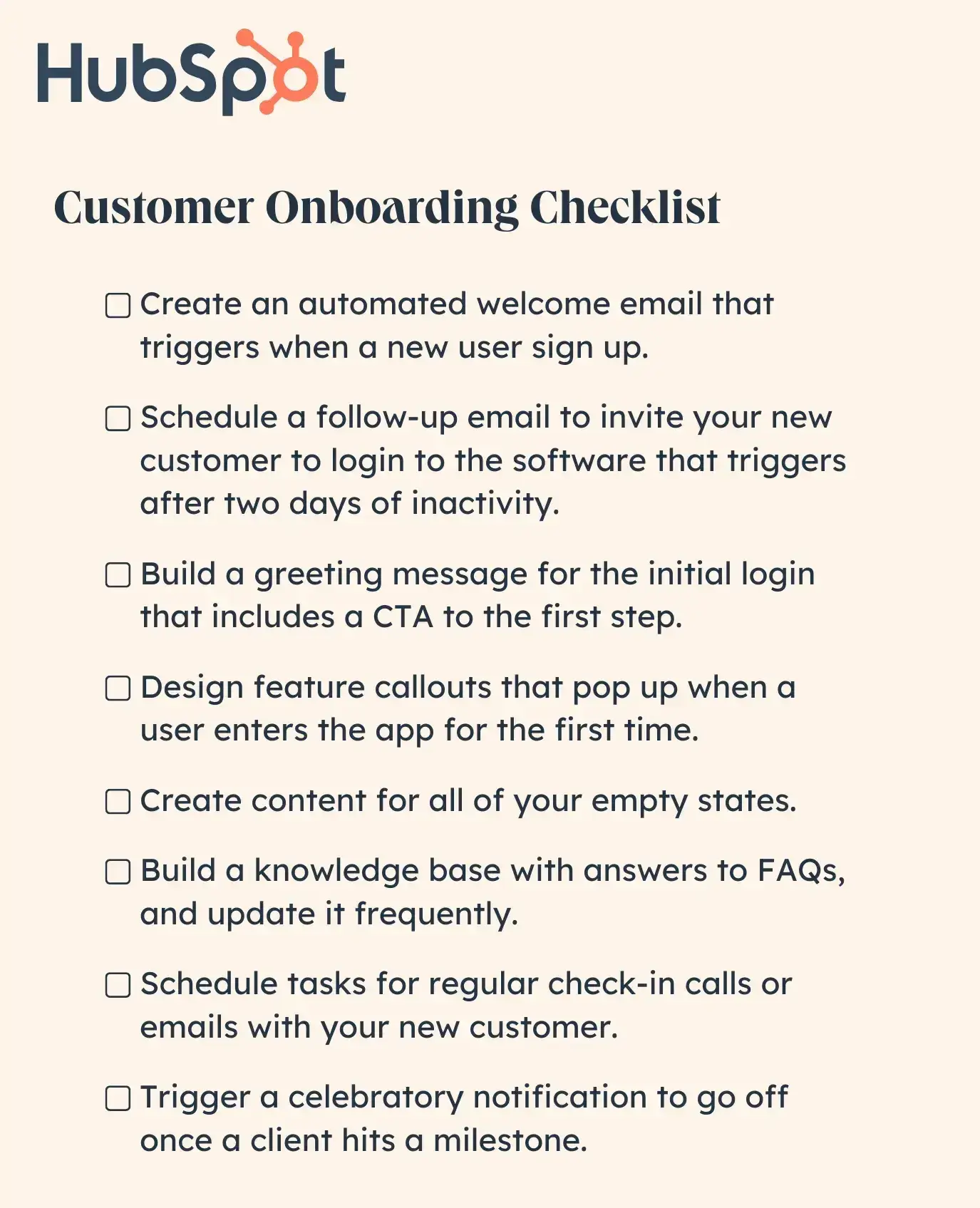
The Benefits of Customer Onboarding
A well-designed onboarding process ensures that your customers feel valued, supported, and confident in their decision to choose your product. It also provides them with the necessary tools and knowledge to use the product effectively, leading to a more satisfying user experience.
For example, Jeff Zhou, the CEO and founder of Fig Loans, gamified the tool’s onboarding process to boost customer enthusiasm and facilitate better learning. His team introduced a rewards system where customers earn points for completing specific onboarding tasks, such as watching educational videos, setting up direct debits, or exploring our financial tools.
This gamification improved the onboarding experience while also increasing completion rates by 50%, he said. Customers valued the interactive and gratifying experience, which strengthened their connection to the platform.
I talked to some business professionals about their customer onboarding process, and they shared with me the benefits of creating the best onboarding process possible.
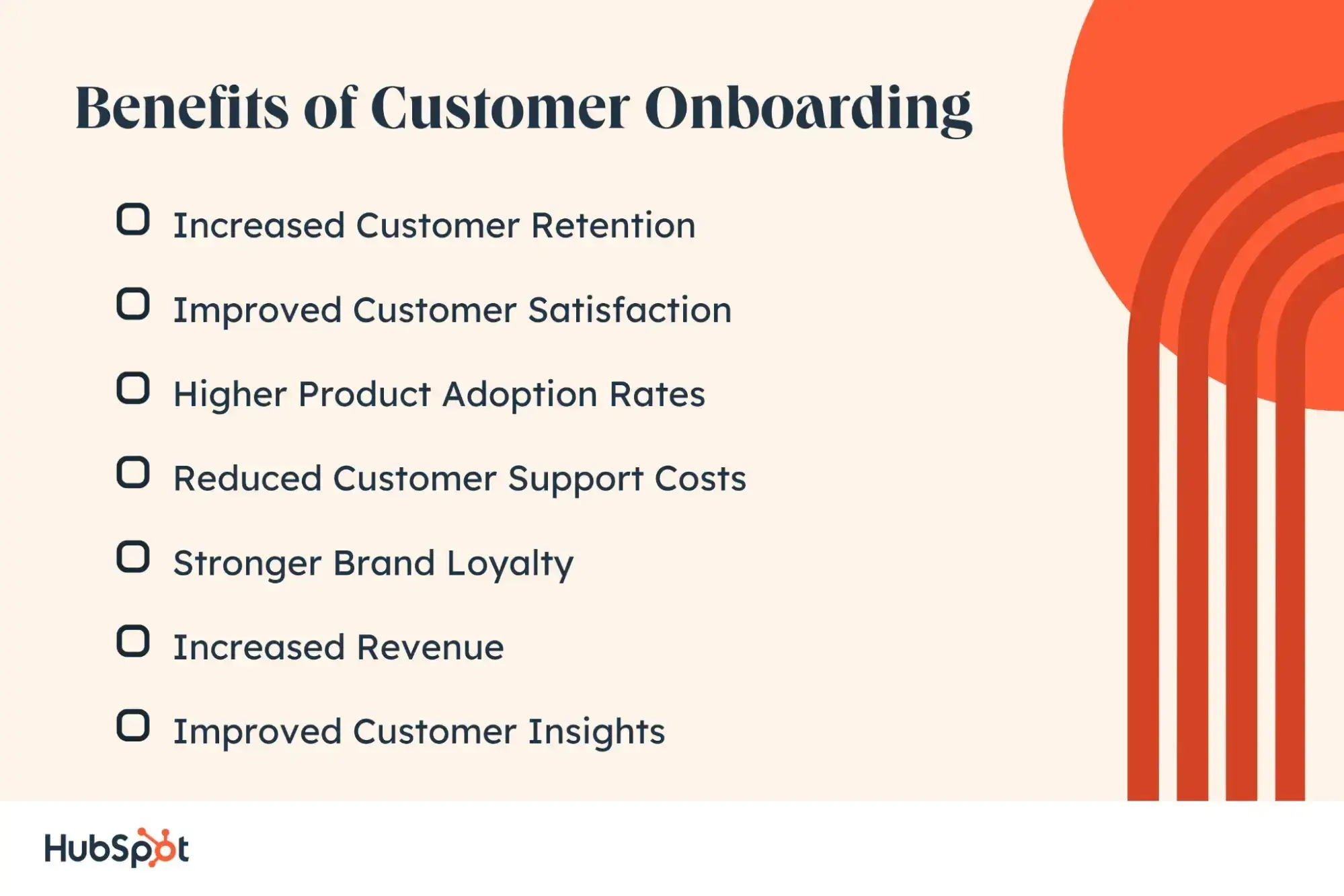
1. Increased Customer Retention
A positive onboarding experience helps to build a strong foundation for a long-term business relationship between you and your customers.
Effective onboarding educates customers on your product’s value, ensuring they see its benefits quickly, which reduces the likelihood of them abandoning it. This long-term engagement translates into higher retention rates, which are crucial for sustained business growth.
Shawn Plummer, the CEO of The Annuity Expert, knows this, and that’s why the company revamped its onboarding process to include personalized welcome messages and step-by-step guides.
“[After doing this], our customer retention rate increased by 20% within six months,” says Shawn. Customers frequently mentioned how the welcome messages made them feel immediately at ease, encouraging them to engage more deeply with their offerings.
2. Improved Customer Satisfaction
A smooth onboarding process ensures that customers feel welcomed and understood. It addresses their needs and concerns right from the start, leading to higher levels of satisfaction.
“Positive onboarding reduces the learning curve and accelerates time-to-value; customers can achieve their objectives more quickly by receiving explicit, step-by-step instruction and resources,” says Logan Mallory, the VP of marketing at Motivosity.
Motivosity created a series of Quick Win tutorials to showcase essential features and benefits. “Customers who engaged with these tutorials reported a 40% faster time-to-value, increasing their overall satisfaction and likelihood to recommend our product,” she said.
As Logan said, satisfied customers are more likely to become advocates for your brand, providing positive reviews and referrals. This not only boosts your brand’s reputation but also attracts new customers.
3. Higher Product Adoption Rates
Effective onboarding introduces customers to your product's features and functionalities, ensuring they understand how to use it fully. This comprehensive introduction leads to higher adoption rates, as customers are more likely to use the product to its fullest potential.
Higher adoption rates mean customers derive more value from your product, which increases the likelihood of them remaining loyal and upgrading to premium features or plans.
4. Reduced Customer Support Costs
When properly onboarded, customers are less likely to encounter issues or have questions requiring support. The training and resources you provide them during onboarding empower them to resolve minor issues on their own.
Alfred Christ, a digital marketer at Robotime, said that integrating an efficient onboarding process has built efficiency into their customer support since well-informed customers typically have fewer questions asking for help.
“For example, once we implemented a variety of onboarding emails that included tips, video tutorials, and FAQs, we found there was a significant drop in the number of support tickets related to the assembly of products,” he said.
“This increased the productivity of our support team and improved the overall customer experience — a win-win.”
Reducing support requests lowers customer service costs and allows your support team to focus on more complex issues.
5. Stronger Brand Loyalty
A well-executed onboarding process helps you create a positive first impression and establishes trust with your customers. When customers feel supported and valued from the beginning, they can develop a strong emotional connection with your brand, leading them to continue using your product and actively promote it to others.
Axel Lavergne, the founder of Reviewflowz, knows all about this.
“One of our clients, a SaaS company, had a significant churn rate due to a complicated setup process. We helped them streamline their onboarding with interactive video tutorials and automated follow-up check-ins that addressed typical concerns and questions. The result was a 50% drop in churn and happier customers who became advocates for their product,” he says.
6. Increased Revenue
Perfecting your customer onboarding can directly impact your bottom line. Retained and satisfied customers are more likely to make repeat purchases, upgrade their plans, and take advantage of additional services you offer.
This is not limited to B2B companies; B2C and DTC companies can also increase their revenue and profitability by integrating stellar customer onboarding processes, as Sergey Taver knows well.
As the marketing manager of Precision Watches, a DTC brand, Taver and the team implemented a proactive service check-in, contacting clients a month after they purchased. This included a personalized email and a quick survey to gauge satisfaction and address any concerns.
“One customer, who had a minor issue with their watch clasp, appreciated the timely intervention and became a loyal repeat customer. This strategy led to a 30% increase in repeat purchases and an influx of referrals. It demonstrated our commitment to customer satisfaction beyond the initial sale,” Taver says.
7. Improved Customer Insights
The onboarding process is an opportunity to gather valuable data about your customers’ needs, preferences, and behavior. By analyzing this data, you can gain insights into how customers are interacting with your product and identify areas for improvement.
This feedback loop allows you to continuously refine and optimize your onboarding process, making it more effective over time and ensuring that it meets the evolving needs of your customers.
Pro tip: If you need a free tool to help you perfect your customer onboarding process, check out HubSpot’s Customer Service Software.
What is a customer onboarding playbook?
To keep customer onboarding consistent, companies may create a customer onboarding playbook. A customer onboarding playbook is a comprehensive guide that outlines the steps companies must take when onboarding new customers. The playbook defines — based on data — the necessary customer journey to retain and nurture customers.
The playbook outlines every element, such as:
- Initial contact.
- Product demonstration.
- Onboarding process.
- Follow-up support.
The playbook serves as a “how-to” for building relationships with customers and providing the most effective onboarding experience possible. It ensures that all employees are following the same process when it comes to interacting with customers.
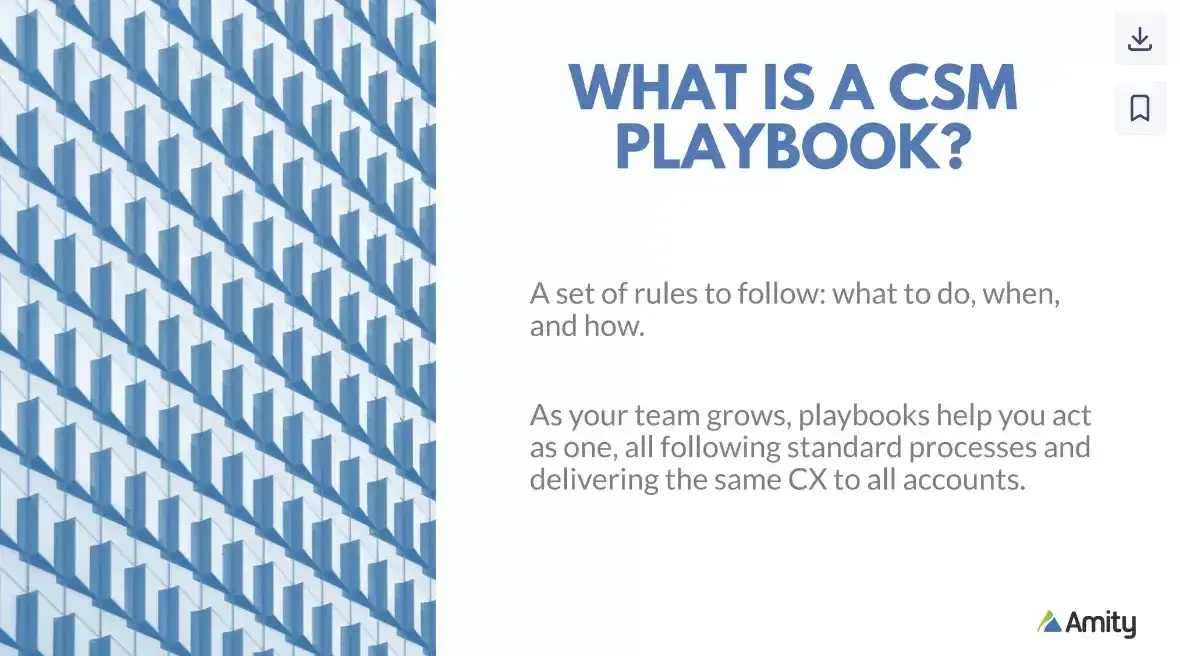
Customer Onboarding Examples
By now, it’s clear that your customer onboarding process can take almost any direction.
Here are a few customer onboarding examples I admire that you should use for inspiration.
1. Slack
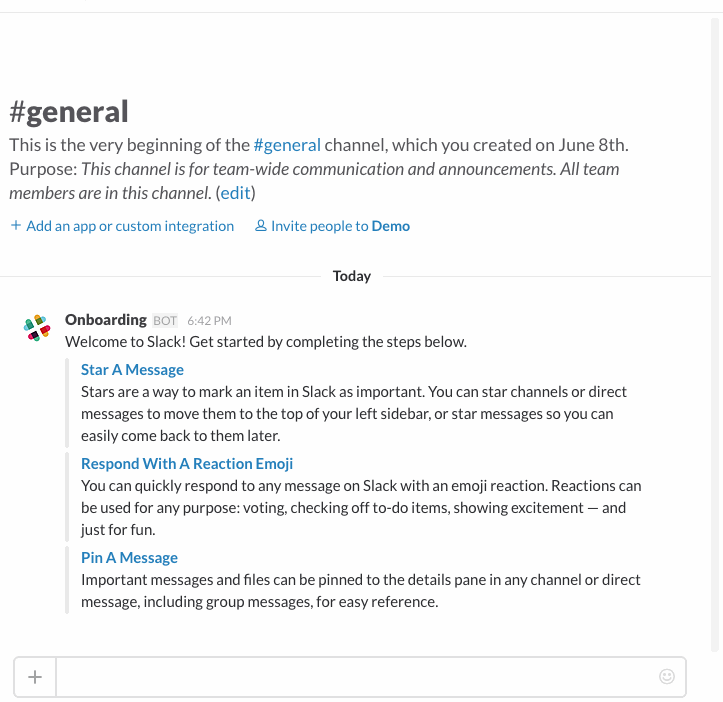
Slack ensures new users know exactly what to do to get started with the tool. They also provide live, animated links that teach you how to complete each task.
2. Duolingo
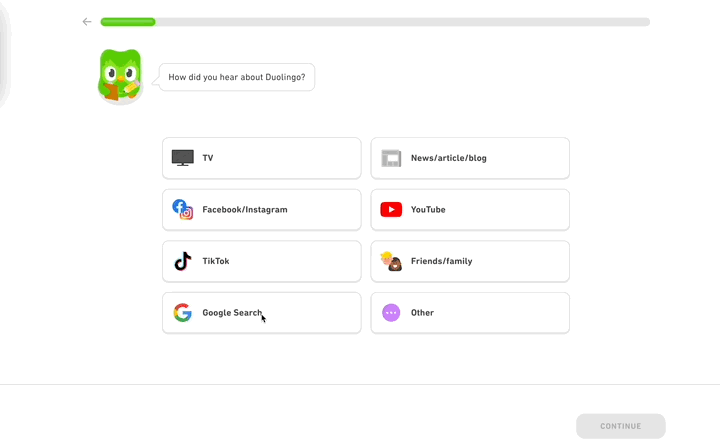
Duolingo provides an animated walk-through of their tool. They also provide a step-by-step onboarding process so new users don’t get overwhelmed with a long to-do list.
3. Dropbox
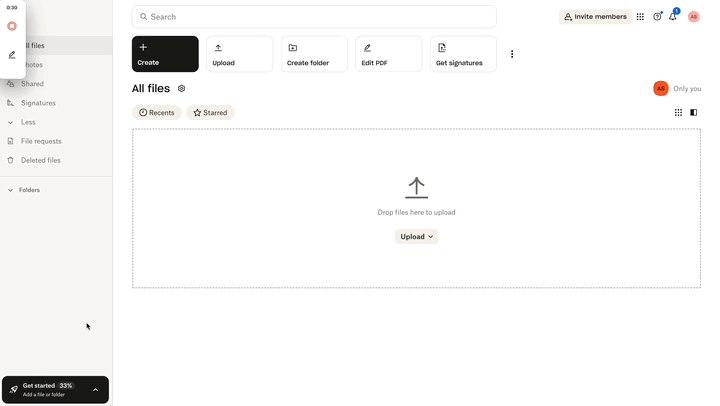
Dropbox has a progress bar within the app that details steps to take to familiarize yourself with the tool, including uploading a file or folder, sharing a file or folder, and connecting your devices. The progress bar closes with each step you take, and the goal is to close it entirely (or get to 100% in Dropbox’s case).
4. Pinterest
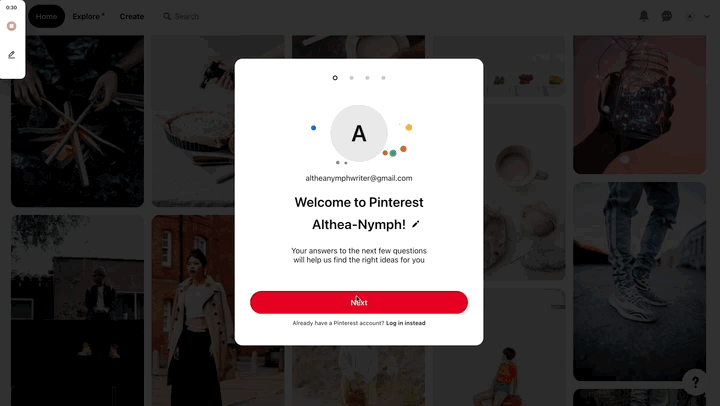
Pinterest suggests a series of categories to help users cater to their interests. Once a user selects five options, the platform uses this information to create a feed that simplifies discovering and saving pins.
5. Etsy
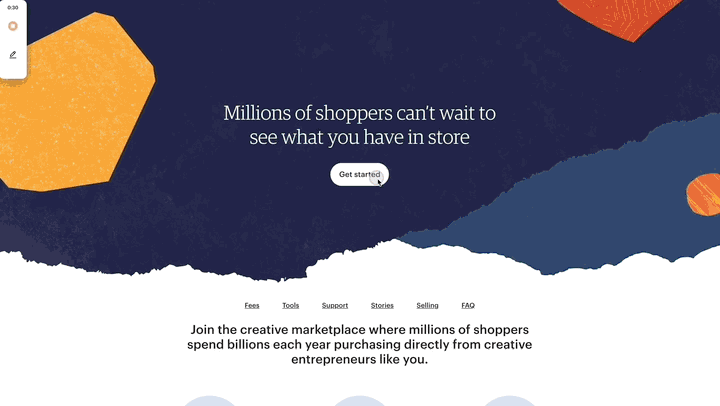
Etsy allows its shop owners to know exactly where they are in the setup process. The indicator at the top of the page informs them of their current step and the following steps needed for completion.
6. Canva
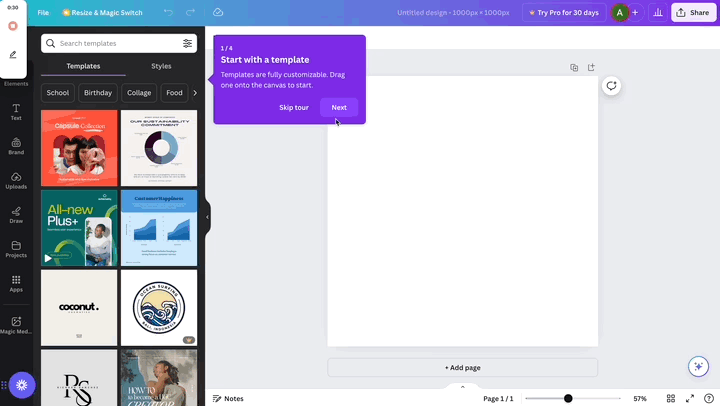
Canva provides a tour around its system. In four quick steps, it highlights the most necessary parts of the design process to help users get from start to finish.
7. JustFab
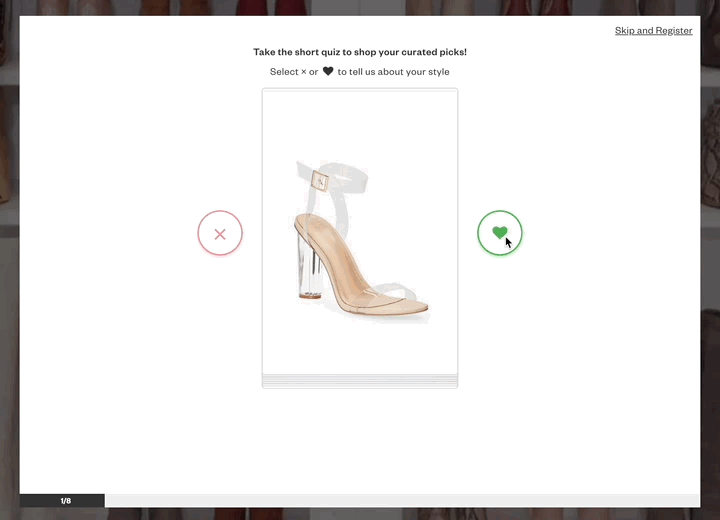
JustFab gives customers a quick survey to cater the shopping experience to their likes and dislikes. Once they create a profile, the company uses this information to present a curated list of styles.
These examples might make it seem like customer onboarding can only be done by prominent brands with a wealth of resources. Luckily, you can begin onboarding customers with a similar level of professionalism using the following free and paid tools.
Customer Onboarding Software
Whether you have tens, hundreds, or thousands of customers, it is hard to keep up with each person along the buyer journey. I like to let customer onboarding software do the work for me.
The tools below optimize the experience for customers and offer various methods — including email, live chat, and tutorials — to guide users through the onboarding process.
Not only does this software carry the brunt of the labor, but it also helps increase customer retention and conversion rates for your business.
1. HubSpot
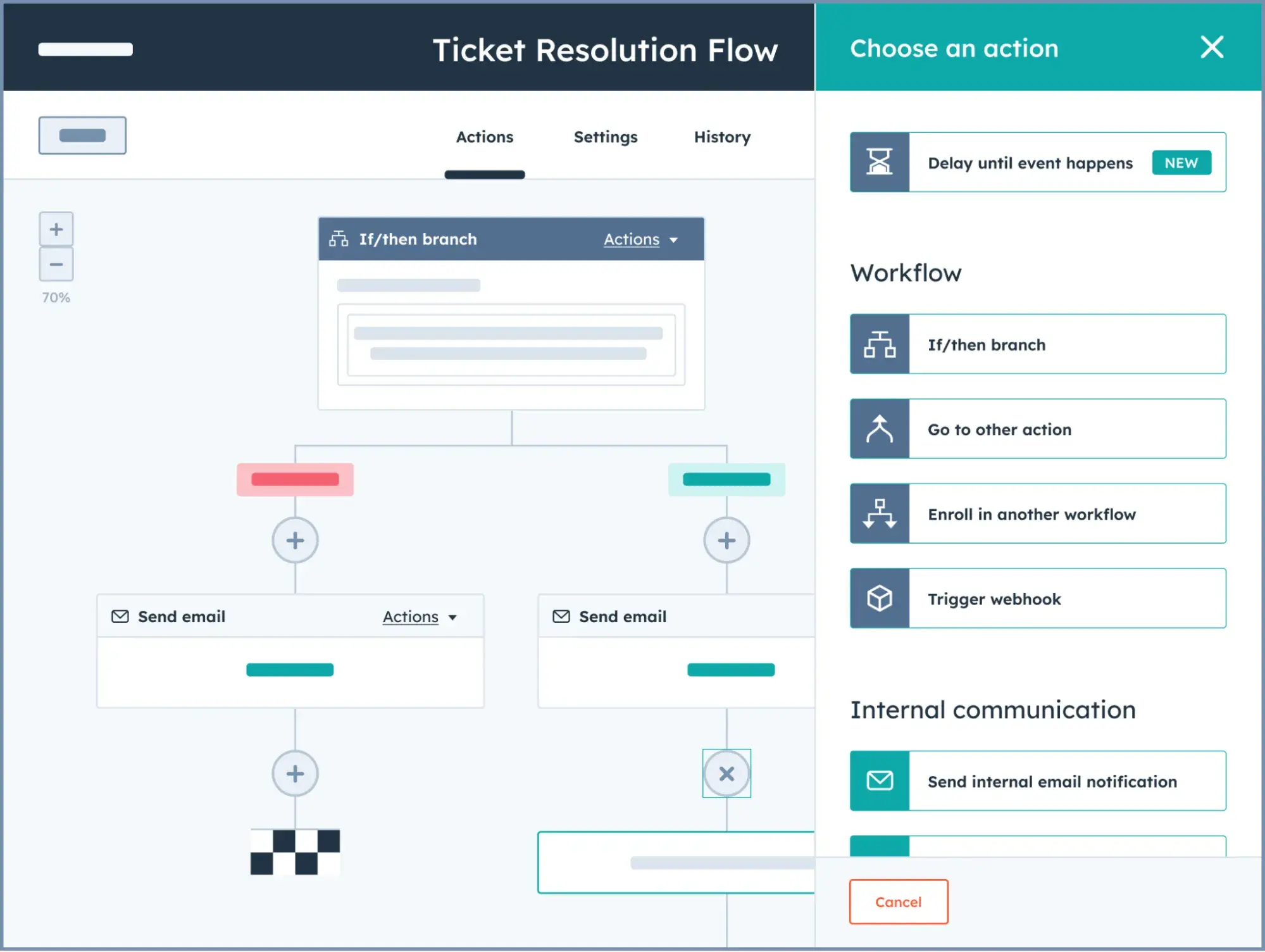
HubSpot includes free email tools, contact management tools, and live chat, ensuring that each of your customers is treated like an individual and not just another entry in an unmanageable database.
HubSpot’s Marketing Hub, Sales Hub, Service Hub, and Operations Hub are integrated into a single platform, making it easy for you to successfully onboard and serve your customers.
The best part is that you can start onboarding your customers for free, then upgrade as you grow. If you upgrade to a Marketing Hub Professional subscription, for instance, you can begin to automate onboarding tasks as you acquire more customers.
Pricing: A free plan is available. The starter customer platform costs $15/month per seat. Professional bundles start at $1,300 a month.
2. Arrows
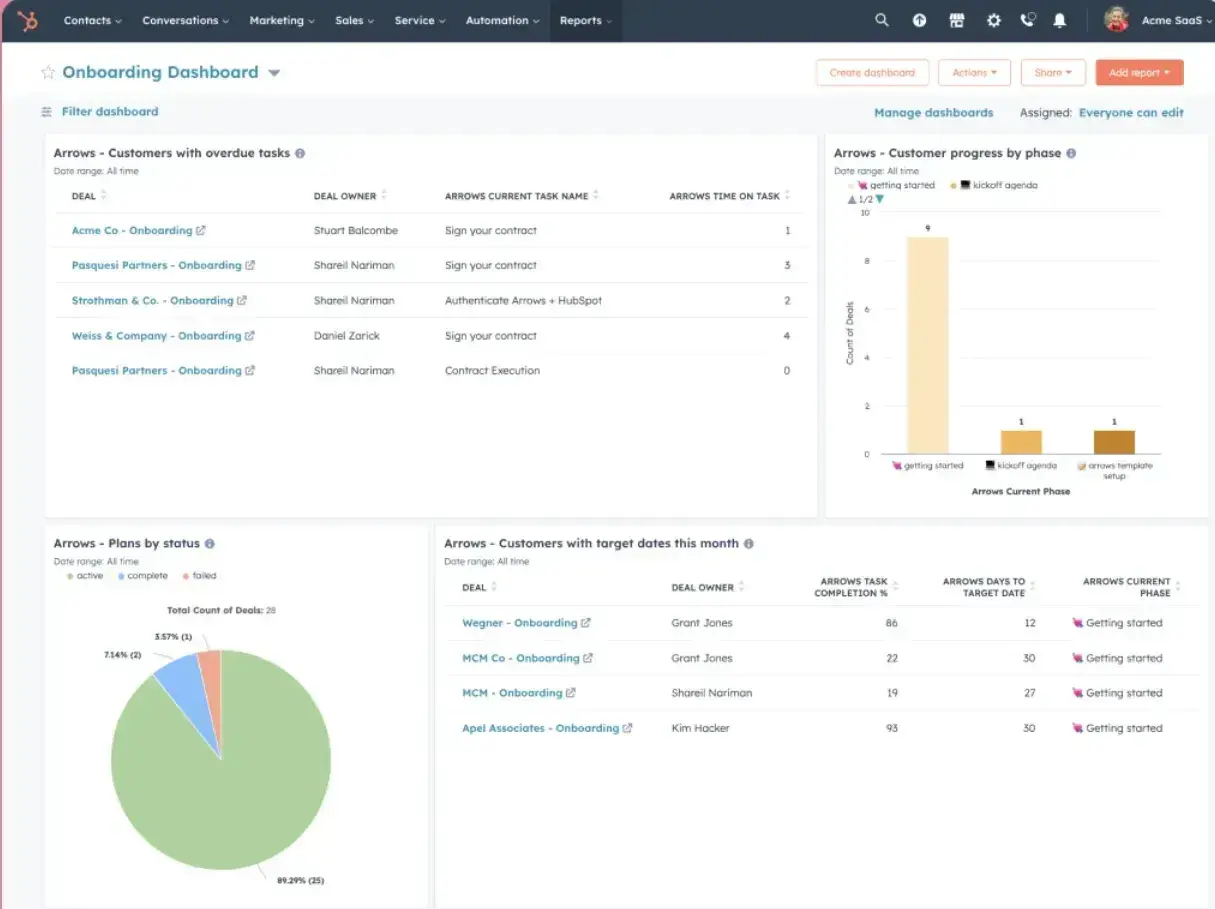
Arrows is a customer onboarding platform built specifically for HubSpot, so you can stop onboarding customers with spreadsheets and project management tools.
Arrows allows you to attach collaborative client onboarding checklists to HubSpot deals and tickets, so your customers can take action on their tasks and your CRM stays up to date as they do.
Because Arrows has a deep HubSpot integration, it feels like a native extension of your team’s CRM processes. It fully utilizes HubSpot features like the CRM card, workflow actions, real-time data syncing, timeline events, and more.
More importantly, Arrows is designed to help your customers complete their tasks. It allows you to embed forms, meeting links, videos, and more directly on the task page so your customers can keep moving.
Pricing: A free plan is available if you connect your HubSpot account. Paid plans start at $300 per month.
3. Userlane
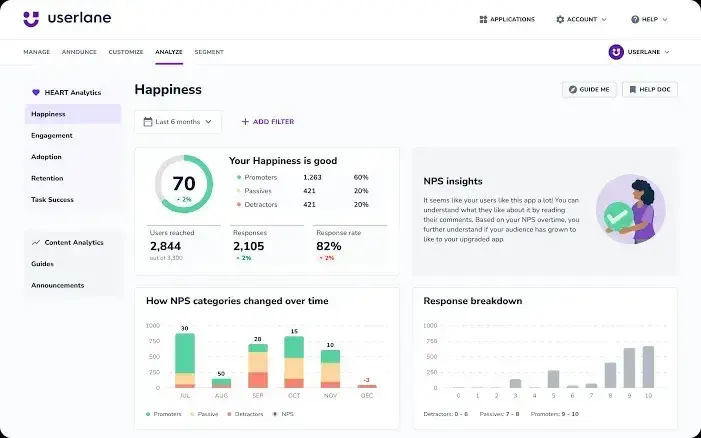
Userlane is a digital adoption platform that gives you the ability to create an automated onboarding tour across your software.
Bubbles and notes will pop up as your customer moves through your platform. You can create a personalized tour for each customer type depending on their goals.
The tool allows you to create unlimited “userlanes,” or tutorial paths, as well as unlimited plays. Userlane tracks your customers’ interactions to deliver metrics on your onboarding’s effectiveness.
With Userlane, you’ll still need a CRM and marketing automation platform to send onboarding materials to your new customers and provide a more personal touch.
Pricing: Pricing is available upon request.
4. GuideCX
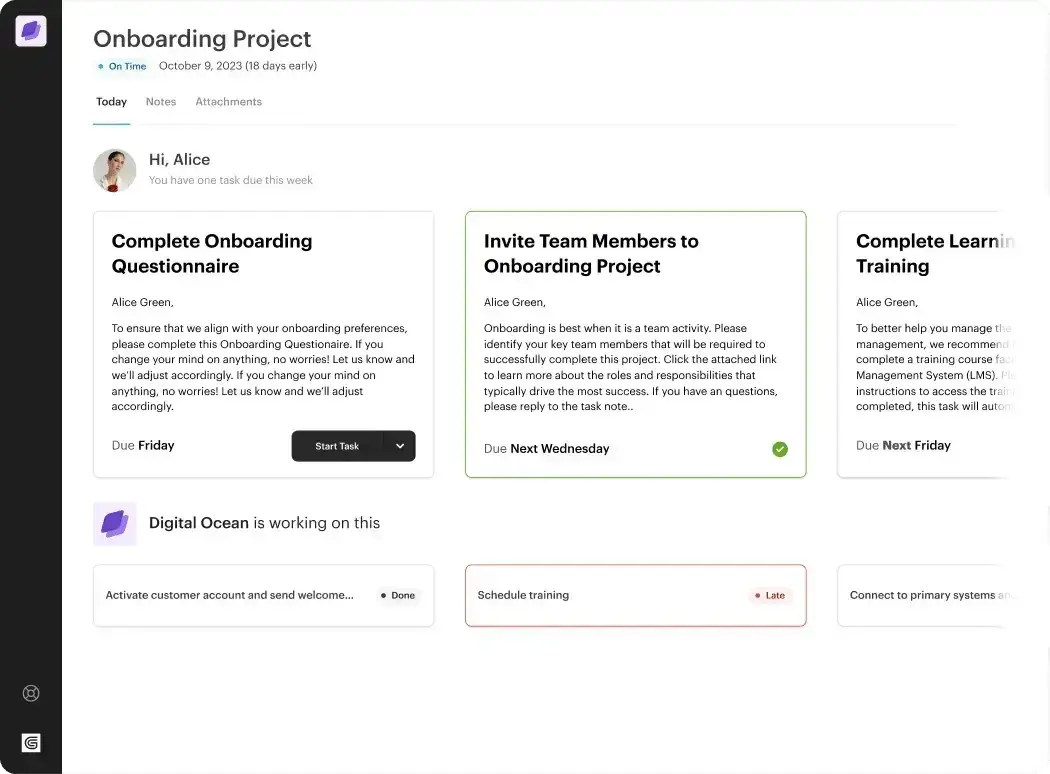
GuideCX is a client onboarding system that allows you to create assignments and tasks that teach your client how to use your product.
Similar to a project management platform, GuideCX works on a “Project” basis. Each project provides steps and tasks to complete as onboarding progresses.
Your customers don’t have to log in to track their progress. They simply have to follow the link sent to their email.
The tool provides a basic automated email feature that will send onboarding messages for you. For stronger customer management power, you’ll want to pair GuideCX with a CRM.
Pricing: The Starter tier is $5,000/yr with other plans available upon request.
5. Userpilot
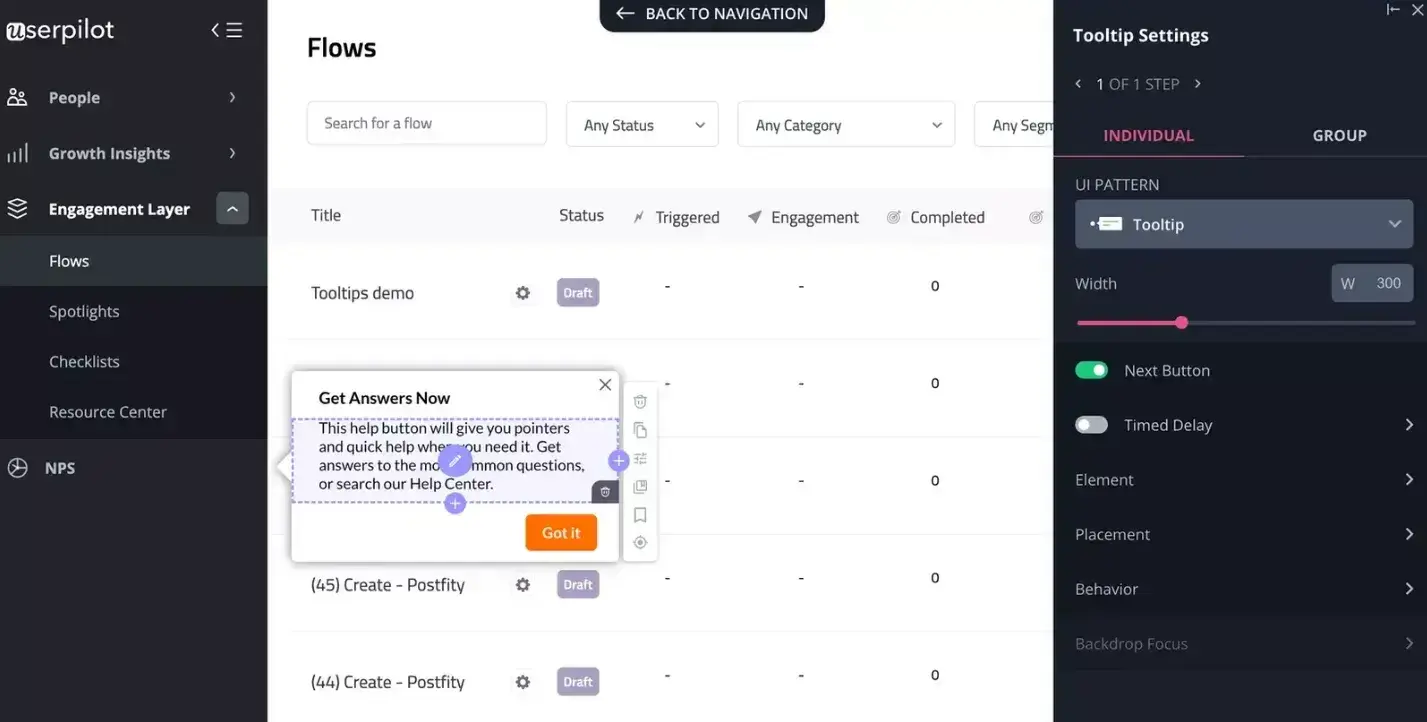
Userpilot is a robust user onboarding tool that combines an easy-to-use in-app onboarding guide builder with advanced product analytics and in-app surveys. It doesn’t require any code to build the onboarding flows or tag feature you want to track.
Userpilot is one of the few solutions on the market that allows you to trigger in-app experiences in real-time based on user behavior. It also allows you to collect user feedback with in-app surveys and NPS. Userpilot also offers the most advanced user analytics from similar engagement tools with paths, trends, and funnels.
Pricing: Starter is $249/month; Growth is $799/month; and Enterprise pricing is available by request.
6. Apty
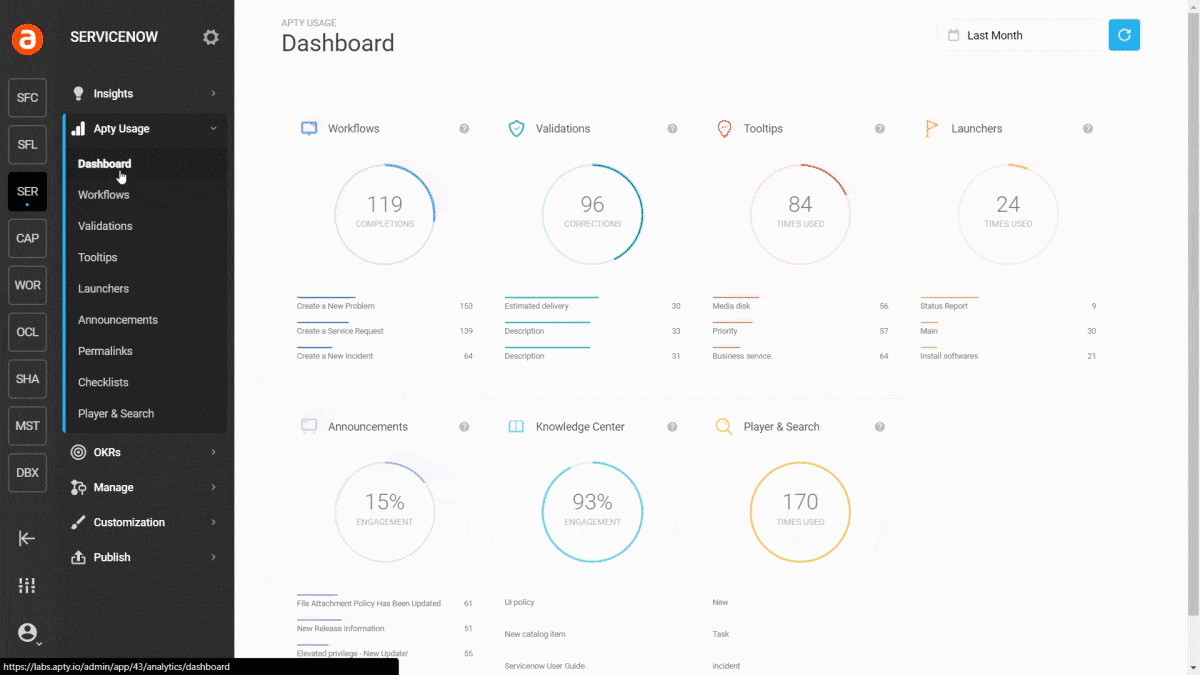
Apty is a digital adoption platform that allows you to create a tutorial path across your software. The tool’s on-screen guidance feature is paired with onboarding checklists and customized content to deliver a seamless onboarding experience.
Another useful feature is its in-app help widget, which allows users to quickly retrieve help documentation without needing to access a separate knowledge base.
Apty is most effective when paired with an email marketing tool and a CRM.
Pricing: Pricing available upon request.
Customer onboarding helps you grow better.
Creating a great customer onboarding process starts with truly understanding your customer.
I’ve learned that by using data and customer feedback to understand what your customers need, you can build an effective onboarding experience that’s relevant at every step of the new customer journey.
By empowering your customer to quickly see value from your product, you’re setting them up to hit their personal goals and you’re creating revenue and retention benefits for your company.
Net Promoter, Net Promoter System, Net Promoter Score, NPS and the NPS-related emoticons are registered trademarks of Bain & Company, Inc., Fred Reichheld and Satmetrix Systems, Inc.
Editor's note: This article was originally published in June 2018 and has since been updated for comprehensiveness.
Customer Onboarding


.png)





![10 Customer Onboarding Challenges You Might Face This Year [+Expert Tips]](https://53.fs1.hubspotusercontent-na1.net/hubfs/53/ai%20customer%20service%20predictions%20(2).webp)
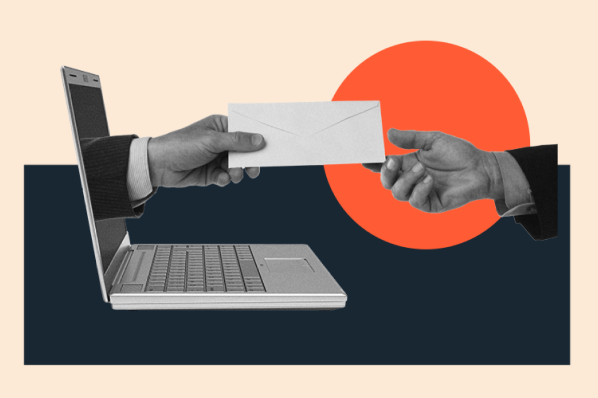
![Digital Onboarding: How to Make It Work For You [+ 5 Helpful Tools]](https://53.fs1.hubspotusercontent-na1.net/hubfs/53/digital%20onboarding_featured%20image.jpg)
![Perfect your customer onboarding with our expert tips [+ checklist]](https://53.fs1.hubspotusercontent-na1.net/hubfs/53/client-onboarding-best-practices-1-20251029-7553263.webp)
.webp)
